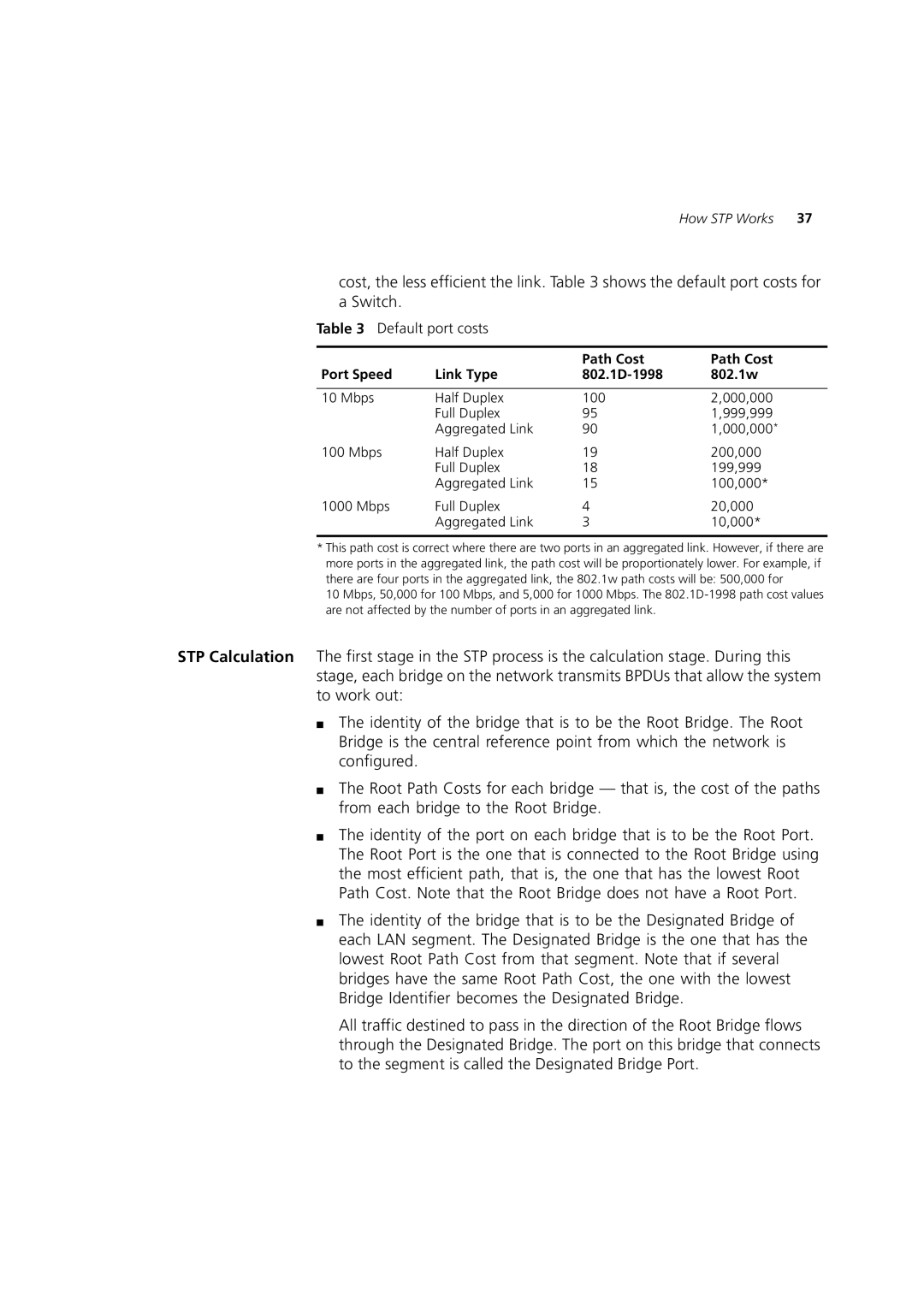
How STP Works 37
cost, the less efficient the link. Table 3 shows the default port costs for a Switch.
Table 3 Default port costs
Port Speed | Link Type | Path Cost | Path Cost |
| 802.1w | ||
|
|
|
|
10 Mbps | Half Duplex | 100 | 2,000,000 |
| Full Duplex | 95 | 1,999,999 |
| Aggregated Link | 90 | 1,000,000* |
100 Mbps | Half Duplex | 19 | 200,000 |
| Full Duplex | 18 | 199,999 |
| Aggregated Link | 15 | 100,000* |
1000 Mbps | Full Duplex | 4 | 20,000 |
| Aggregated Link | 3 | 10,000* |
*This path cost is correct where there are two ports in an aggregated link. However, if there are more ports in the aggregated link, the path cost will be proportionately lower. For example, if there are four ports in the aggregated link, the 802.1w path costs will be: 500,000 for
10 Mbps, 50,000 for 100 Mbps, and 5,000 for 1000 Mbps. The
STP Calculation The first stage in the STP process is the calculation stage. During this stage, each bridge on the network transmits BPDUs that allow the system to work out:
■The identity of the bridge that is to be the Root Bridge. The Root Bridge is the central reference point from which the network is configured.
■The Root Path Costs for each bridge — that is, the cost of the paths from each bridge to the Root Bridge.
■The identity of the port on each bridge that is to be the Root Port. The Root Port is the one that is connected to the Root Bridge using the most efficient path, that is, the one that has the lowest Root Path Cost. Note that the Root Bridge does not have a Root Port.
■The identity of the bridge that is to be the Designated Bridge of each LAN segment. The Designated Bridge is the one that has the lowest Root Path Cost from that segment. Note that if several bridges have the same Root Path Cost, the one with the lowest Bridge Identifier becomes the Designated Bridge.
All traffic destined to pass in the direction of the Root Bridge flows through the Designated Bridge. The port on this bridge that connects to the segment is called the Designated Bridge Port.
